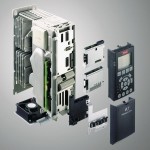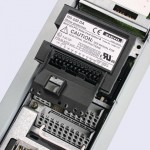Modern manufacturing plants in the process and chemical industries are highly automated. Monitoring, regulation and control are linked across many levels and result in smooth, safe manufacturing processes. If the operator also manages to intelligently combine the equipment involved with energy-efficient solutions, this leads to increased profitability and competitiveness and simultaneously safeguards the site.
The author: Christian Mieslinger Product Manager, VLT AutomationDrive, Danfoss
An important factor in achieving this goal is leveraging the potential offered by modern sensors and actuators. The widespread use of integrated monitoring concepts and fieldbus networks with self-diagnosis of the bus devices improves the chances of specifically recognising, quickly localising and rapidly fixing faults in the equipment. A targeted fault response strategy is extremely important in manufacturing plants with hazardous areas to avoid situations that could endanger people, the environment and the machinery.
Cost pressures are increasing, and with them the need to reduce energy use. If an existing machine is modified or a new one installed, the capital costs have to be offset against the need to employ energy-efficient solutions.
The chemical industry in particular has seen a rapid rise in the number of variable-speed drives, which are gradually replacing pump and fan applications with classic bypass controls. The owner’s desire to operate electric drives in the same way as conventional actuators often creates additional flexibility and options for process control – as well as reducing expenditure on energy – and is therefore only logical.
For some time now, raw component costs have not been the only consideration. Increasingly, in the light of growing cost consciousness, coherent and efficient concepts are called for. Among the many aspects that must be taken into account are the space a function requires in order to be implemented, strategies for dealing with heat losses, the costs for planning and installation and the necessary peripheral devices such as incoming feeder panels.
New options for variable-speed drives in hazardous production areas are described below.
Requirements of hazardous areas
If the motor to be controlled is located in a potentially explosive part of the production process, a motor with a flameproof enclosure is typically used to avoid any additional expense for implementing other types of protection. In accordance with the technical requirements of EN 60079, PTC thermistors integrated in the winding must be employed to prevent overheating and are crucial for the motor’s Ex approval. Their evaluation is obligatory regardless of the Ex zone.
In the last few years, using the PTC evaluation devices integrated in the drive to monitor PTC sensors has become established practice, resulting in reduced costs for components, wiring and interfaces as well as shorter installation times. For example, Danfoss offers an Atex certified PTC evaluation unit in the form of the MCB 112 option, which combines full motor protection with a similarly certified and safe function for disconnecting the power supply to the motor.
Use of Ex e motors simplified
Since the traditional approval procedure for converter-fed motors with the “increased safety” type of protection (Ex e) is very inflexible and complicated, equipment owners have often tended to opt for larger and significantly more expensive models with a flameproof enclosure (Ex d) for applications in hazardous areas. In the meantime, the PTB metrology institute in Braunschweig has developed a new approval procedure, which in future will make the use of frequency converters with Ex e motors much more attractive. Variable-speed applications – which were previously impossible to achieve with Ex d machines due to their size, weight and substantially higher costs compared to Ex e motors – can now also be designed.
The new concept only provides for the approval of the motor itself; however, special requirements for temperature monitoring are defined in the EC type examination certificate. Thus, current limitation as a function of speed must be implemented in addition to the normal, certified PTC thermistor evaluation, in order to take account of the reduced cooling of self-ventilated, variable-speed motors. The frequency converter, on the other hand, requires no special approval. Nevertheless, it must support speed-dependent monitoring of various current values, in other words the input of a maximum permissible motor current at different speeds (so-called “interpolation points”).
The manufacturer must state this information as well as the interpolation points for the speed-current values on the nameplate of the motor approved for this mode of operation. A data sheet describing variable-speed operation in the hazardous area also exists for the motor. However, this does not mean that it is also automatically approved for mains operation in this Ex area. Although this is possible, it must be explicitly indicated in a separate data sheet and on a separate nameplate, which also contains all information about safe mains operation in the hazardous area.
Since the maximum permitted current values for self-ventilated motors are typically lower below rated speed than the nominal values for mains duty, unrestricted operation with constant torque is often not feasible in the lower speed range or only possible by oversizing. Although this imposes a few limitations on some applications, it is ideal for machines with a quadratic torque characteristic which are often used in this kind of process.
In combination with the integrated PTC evaluation unit, the user acquires a solution which allows a smaller and more affordable motor, guarantees total reliability in hazardous environments and enables Ex drives to be converted profitably to speed control owing to the shorter payback period – something that was previously unattainable because of the high capital costs.
Conclusion
The concept described here for drive solutions in hazardous areas makes it clear that significant energy savings cannot be realised simply by increasing the efficiency of equipment which is already very efficient; if the process characteristics and process control can be optimised, the potential is much higher.
Particularly today, with short payback times more important than ever as a criterion for investment decisions, new opportunities and technologies need to be investigated – and where suitable, utilised – more intensively than in the past. Of course, this must be done without compromising the safety of people or plant in any way; on the contrary, the objective should be to simultaneously increase safety standards. Modern frequency converters make a vital contribution here, in that they facilitate and optimise the physical and functional unification of traditionally separate components. Application-oriented drive systems give users the functionality they are looking for while providing increased operating reliability and excellent value for money.
Hall 14, Booth H30
Online-Info: www.cpp-net.com/2111425
Share:








